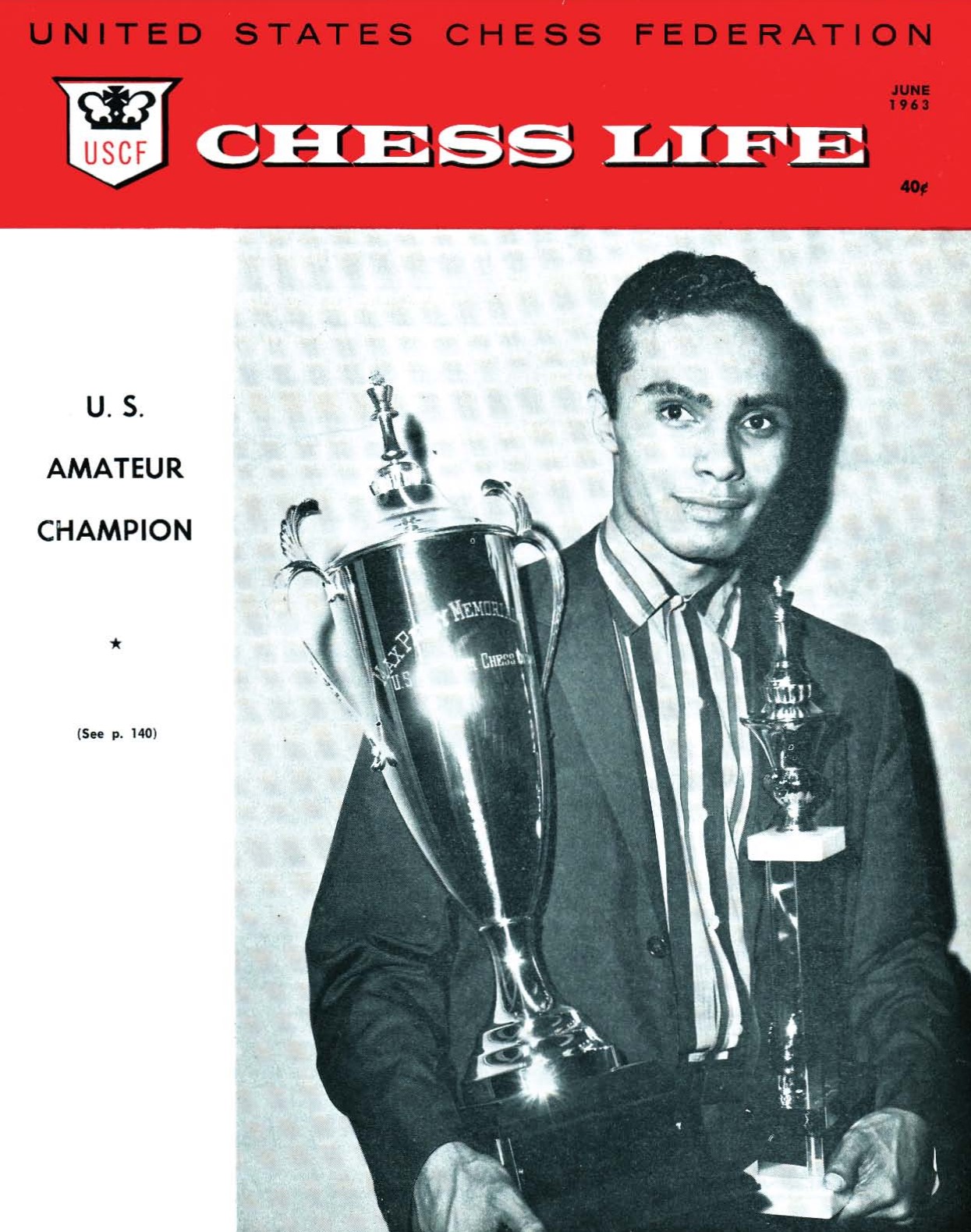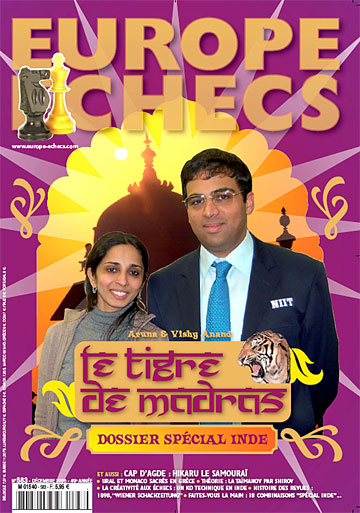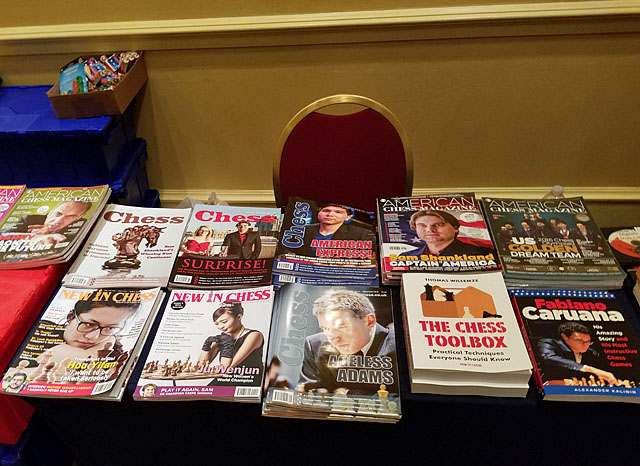Are chess magazines still relevant??
.jpg)
As a newswriter for most of my adult life, I have always appreciated the craft of composition and the artistry behind “wordsmithing.” Literary works present one’s inner-thinking and create a world through the eyes of the writer. In my earlier years, I devoured Chess Life and later improved my game by subscribing to Massachusetts Chess Association award-winning Chess Horizons, Yasser Seirawan’s Inside Chess, and the obscure Players Chess News.
Incidentally, there has been a trend away from print media as we increase our reliance on digital platforms with a particular emphasis on social media. Today, media companies are trying to figure out how to deal with the current trends toward the digitization of information. Some have even made it more expensive to maintain hard-copy subscriptions for magazines and newspapers. Other organizations have done away with hard copies altogether. Given this paradigm shift, one may ask, “Are magazines are still relevant?”
Chess Magazines of Today
This question is crucial and has occurred to me because there appears to be fewer magazines, but an increase in quality. I remember when Wall Steet Journal began using a colorized format and Harvard Business Review developed a more polished design.
In the chess world, several magazines have done aesthetic makeovers and other high-end magazines have emerged. Isn’t it paradoxical that publishers are investing more into a platform that seems to be losing its popularity? Not necessarily!
If one looks at New in Chess (Netherlands), American Chess Magazine (U.S.), Chess (U.K.), Europe Echecs (France) and even Chess Life (U.S.), there has been obvious rebranding efforts. It may be a bit of marketing nuance since these premium items represent a niche in the chess world.

.jpg)
Chess Life: Old and the New!
I remember working at Sports Illustrated (SI) in New York on a temporary assignment and seeing how sacred the process of magazine publishing was. I was able to get a tour of the Time Warner complex and watch the production of the famous magazine firsthand.
Producing the magazine was a very intricate process. It involved choosing the photos, planning the layout, editing the mockups, creating the graphic effects, and finally sending the via satellite to seven locations for high-impact printing. The end result was a wonderful magazine that was a staple of sports enthusiasts. SI had seven issues laid out in advance! In chess, the process is no less intricate. In fact, it is even more intricate giving attention to details with diagrams and complex notation.

Recently I had a conversation with a book vendor at a tournament, and we were talking about chess magazines. He mentioned one premium magazine that appears to be suited more for a coffee table than a chess club. Beautiful work! He spoke of the issue of customers not appreciating the craftsmanship of magazines and their accompanying pricepoint. Of course, I experienced this challenge in producing the full-color hardback book, Triple Exclam.
Many players nowadays believe they can simply find all games on an excellent site like TWIC or on one of many chess-playing servers, but the convenience is only the beginning. There is a certain quality of supplemental information that is needed to bring those battles to life. This is why annotated games by chess Grandmasters are a big attraction for magazines.
Physical or Digital?
The debate of whether it is better to consume material in a physical form versus digital is still a vigorous debate. Both are trying to incorporate features of the other as seen in the movie “Minority Report.” Those who advocate for the physical form may argue that hardcopy publications are more intimate and the immersion in the material is deeper. Reading online is a very different feel in that there is a tendency to skim rapidly. Also, absorbing the material is very different.
For example, if you pick up a Fortune (or any) magazine, you can read it from cover to cover and know you’ve completed the whole thing. If you try to read the same magazine in the online version, it is hard to tell if you’ve read it in its entirety. We click on various links that may take us on a different path, and we may get through a handful of articles before moving onto something else.
.jpg)
Compare the qualitative difference between reading an opened New York Times newspaper (23½”x21″) with reading the same source on the laptop, tablet or a 2½”x4½” cell phone screen. The newspaper easily wins in terms of the sheer amount information can be viewed and absorbed. However, those who advocate for the digital version will say that the material is more portable and thus more convenient to consume on different devices. Very good point indeed and predictably, newspaper circulation is diminishing.
Reading for the Future
There are all types of tools to help the digital reading experience and the resolution of screens is becoming better. There is also the use of hyperlinks and audio-visual media give the information greater value. There are even opportunities to interact with other readers and post your opinions. Indeed, there are some excellent qualities of digitized information. Many publishers provide multiple options for reading the content either in physical or digital formats.
Futuristic Newspaper in movie, “Minority Report”
The jury is out, and there are still value in both platforms, but looking at chess magazines today gives hope that they will immortalize the legacy of chess. Books and magazines will become increasingly associated with status as long as they are presented as high end products. Unlike the newspaper, these formats offer permanency.
Perhaps, we will increasingly come to appreciate the joy of sitting down with a cup of coffee and going over the games. There is a nostalgic feeling in this page-turning pastime. Let’s hope that the chess magazines continue to get the support they need to give our game the credibility it deserves.

Support Chess Magazines!

Solid article. I know when our state association ended mass distribution of our quarterly, the response was limited to those of a certain age group >60-ish and people who wanted copies in which they were featured. The older group spoke in terms of their collection of volumes and were terribly upset. I had not factored that in when it was time to vote on the motion. Consequently, we continue to ship hardcopy to those who want them.
At some point I feel a resurgence of print media. Perhaps they will come up with the “Minority Report” hybrid newspapers. That would be a dream if they ever got the resolution to work. If you look at an old computer interfaces from the 90s, it looks so basic. The figures were very pixelated. In the future, we will have a reading experience that we can’t imagine.
well mags can still be useful, the chessplayers in buffalo ny showed me a few of the latest chesslife mags and as an Ultramodern chess player it was obvious to me that the traditional gms need to upgrade their analysis and do some serious chess work instead of usin laptops for variations like i saw kamsky doin in rochester a few years back. I noticed some of the inaccurate analysis by gm shankland after his win at the U.S. tournament even though he won u can easily see how dubious much of his commetary wuz , so i think the uscf should screen some of theses dudes work to upgrade the MAG particularly when it comes to the na6-c7-e6 trick. BUBBAFISHA
We started American Chess Magazine five years ago out of a desire to produce a publication that would not only celebrate US and world chess, but provide articles that many magazines wouldn’t produce. We opted for superb annotators from veteran GM Alex Fishbein to young John Burke. We can’t keep up with the frantic pace of world chess, but we can go deeper into a good many different areas. We’ve won numerous CJA awards, including best magazine three years running. There is a place for print. It’s real. You can hold it in your hand, stick it in your pocket (as Frank Brady told me once) and you don’t need to worry about a battery. I have every British Chess Magazine (also redone recently) ever published and I love opening these old volumes. They’re like time machines. Our subscribers have increased, so there are people out there that feel the same way. There’s something about both the feel of a quality magazine in your hands and the high quality of content that makes it special. You can get a lot of great stuff on the internet, like this website, but you can’t lay the whole thing out on your coffee table!
I agree on all counts! Love them!
The tactile experiment is unmatched and it allows for deeper immersion into the material. It is also more interactive since you know when you have read the whole magazine. Try that online.
Congratulations on the fine work!